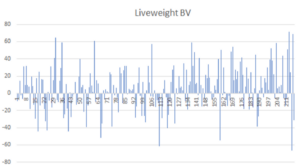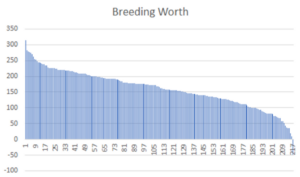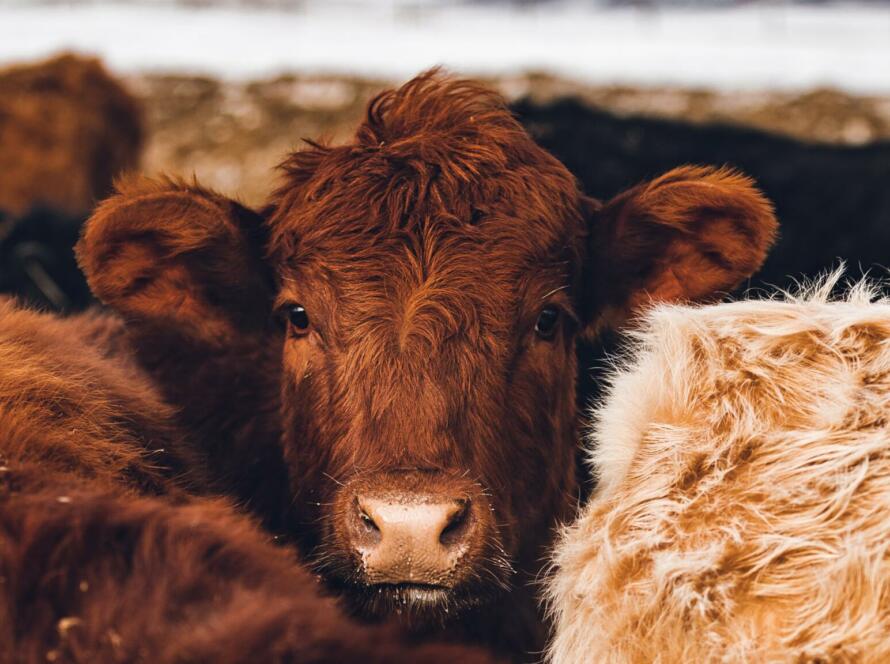Although genetics management is at least 40:60 when it comes to cow performance – management happens all year round and genetics only once.. and that’s Now! It’s not too late to give your program one last check before your one shot at genetic improvement for the year. Here are a few mistakes we are seeing, and what you can do to stop them.
1. Breed being your first breeding objective.
When asked what your breeding objective is – please don’t tell me the breed as your first objective. A F10-F12? Why? What is it about that type of cow do you like? Is it the size? Fertility? Production? All of the above? From the BW download file (from NZAEL), filtered to the more accurate sires and sorted by BW – here is the range of fertility breeding values from the F10-F12 sires.
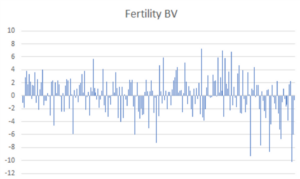
Never forget – there is as much variation within breed as there is across breed, so the best tool we have is the trait EBVs as well as the various indexes. Be more specific about what you are wanting from your cows. Think about, and use the data to tell you, what you are lacking now and where you could make improvements.
2. Taking the easy option.
You manage your cows all year to get the milk production, health and fertility you want. But with genetics, the 2nd biggest contributor to performance, we still see people taking the easy option during that one time of the year where genetic improvement should be made.
-
Have you checked each of the bulls your breeding company has recommended you in one of their packs?
-
Do they all meet your objectives?
Yes, the average is important to look at – but when the actual bull that turns up in your tank is out of your control – it is SO important that you are happy with either/any of the bulls!
-
Have you checked the breeding values from the most recent evaluation? Although the breeding accuracies might be high – we can still see movement from the time the bulls were catalogued!
-
Did you realise that some of the bulls are no longer available and have been switched with another?
-
Even though they might have a high BW, is there a particular trait that has just been balanced by something else? I.e is the fat BV really high which outweighs the fact that fertility BV is really low? Here is an example of two bulls with the same BW but a different range of individual traits.
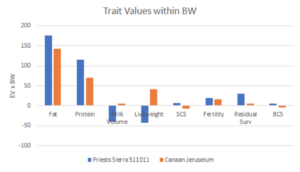
3. Back up/follow up bulls purchased with average data.
If 60% of your calves are born to AI sires, that leaves you with 40% of calves potentially born to a backup bull. There are lots of bulls out there marketed as being low birth weight, or just simply calving ease bulls – but be sure to do your research on how they actually know that!
-
Is it based on their breeding values? If they are purchased from a registered stud and have breeding values.. awesome! Breeding values are the tool that will give you the most confidence you get what you are paying for. Especially if they have their accuracies enhanced with genomics!
-
Is it because they have been used before and their progeny have been recorded? If they already have some runs on the board, we can get a pretty good feeling for how they will perform for specific traits like birth weight. Of course, there will always be a range of performance and maybe some outliers, but this is the data that is most important to the breeding values anyway.
-
Is it because they are the progeny of a bull with breeding values? Someone that has purchased a good stud bull and is multiplying their progeny for sale? Be careful! As I am sure many of you will know, you could have 4 kids to the same parents but all kids are different to each other.. and the parents! Just because mum or dad is good at something – doesn’t mean the kids will be! Concepts apply. Just because the father had calving ease himself, doesn’t mean he will pass these genes over to his progeny.
-
Is it because the breed you purchased is known for calving ease? Be careful! There is always as much variation within breed as there is across breed.
Good back up bulls are key as they often contribute to over a third of all pregnancies! Always do your homework on the bulls you are purchasing. If you get a dud, it’s going to be much more expensive than paying that bit extra for more data!
4. Treating beef like a breed in itself.
Beef is gaining more and more traction every year with lots of benefits like reducing bobby calf numbers. The breeding companies have jumped on board and we are seeing many different breeds marketed for unique characteristics, along with a bigger range of bulls available from the more common breeds like Hereford and Angus. Treating “beef” like a “breed” itself is the biggest trap we have seen this season.
-
Just because the bull is in the catalogue, doesn’t mean it is going to be low birth weight or good for calving ease!! Yes, I am sure that is the intention – but it is not always the case! Sometimes calving ease has been balanced with something else like growth or eating quality. Do your homework! (ESPECIALLY if beef straws are going into heifers!)
-
Bulls of different breeds generally cannot be compared as apples with apples. So if you are looking at the breeding values within the catalogues, a 4kg birth weight breeding value is not the same for Angus as what it is for Hereford. Find the percentile bands online for each of the breeds and look at where that animal sits. Know what is good and bad for that individual breed.
-
Some bulls are marketed with more information than others. Check he has had progeny on the ground for proof of his performance. Don’t be the guinea pig for a bull that hasn’t been used yet so this year is just a test for whether he should be in the catalogue next year or not.
Ask yourself
Here are a few more questions to consider to determine whether the breeding plan you have down for this year is going to achieve a real return for your business.
- Did you have a clear vision in mind for what you wanted to achieve for your breeding program this year or was that created for you (by the sales rep for the genetics company)?
- Did the sales reps create a ‘problem’ that can be solved by you spending more money with their company?
If there is a real problem, then by all means invest in the solution. If it wasn’t a problem until the rep turned up, go away, and do your research before committing to the spend. - Are the calves you are creating by this years breeding plan going to be what your business needs in 5 years time?
What will your cows need to be producing in 5 years’ time to pay the bills? - Does the breeding plan make practical sense for your farm?
Yearling location, shed location, number of mobs? Don’t sign up to a plan that is going to be a logistical nightmare. At the end of the day, cows in calf and days in milk is still the number one priority so ensure you can manage the work load you sign up for. - Have you got enough of the right bulls?
Firstly, are the bulls suitable for the heifers or cows they will be covering? Are they going to create safe calving’s and are they of an appropriate size to cover your cows? Are the bulls in working order? Have they been fertility tested, are they tested and vaccinated for BVD? Have you got the right number of bulls? It is especially important to factor in the flow on effect of syncro programs and the fact that the returns from syncro programs might create more cows cycling on a day than the bulls can handle, ending up in missed pregnancies. - What’s the ROI for your breeding plan?
Is bull of the day the right strategy when there is such variation across the bulls? If you are investing in nominated bulls, who have you chosen and why (were they recommended by a sales rep or have you done your own research)? Are unproven bulls worth the gamble?
There is no one size fits all approach when it comes to breeding cows, selecting bulls or setting up your mating plan. If it is in the too hard basket – just remember that mating is your one yearly chance to make genetic improvement! It’s always worth the effort to take that little bit of extra time to ensure;
-
your objectives are clear and forward thinking
-
you’ve made the right bull decisions and
-
your cows are what you think they are.
If you think you’ve made one of these mistakes, want to have a quick chat about this years program or are keen for an independent review of your current herd – don’t hesitate to give us a call!

